Key in a search term below to search our website.
Key in a search term below to search our website.
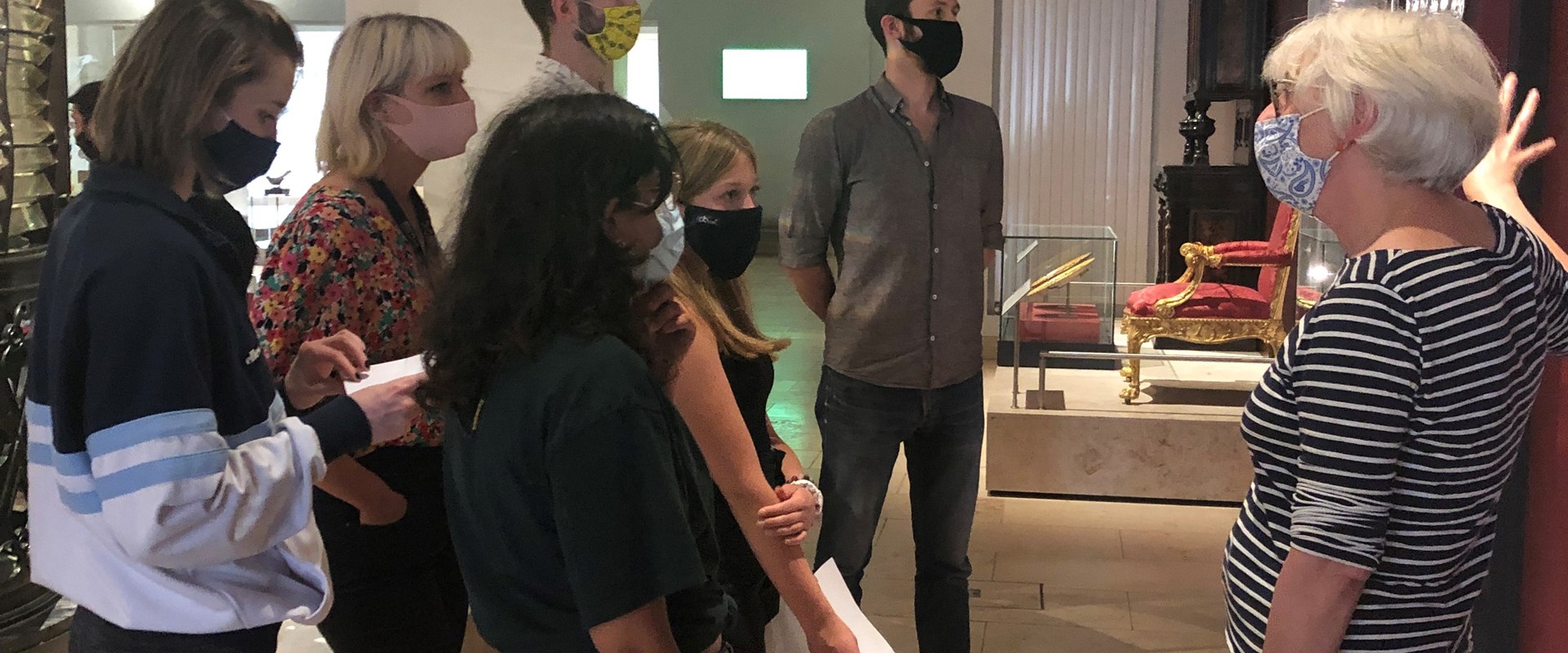
By listening to the voices of young people National Museums Scotland recognised the need to recruit a national youth engagement team to develop a relevant programme of work and test a range of different engagement methods.
Working with one of our consortium partners, Young Scot, a team of dedicated young people signed up as volunteers and took on the task of exploring the needs of their peers by producing ideas and prototypes.
Featured below is the Organisational and Sector Development project which was delivered by five young volunteers.
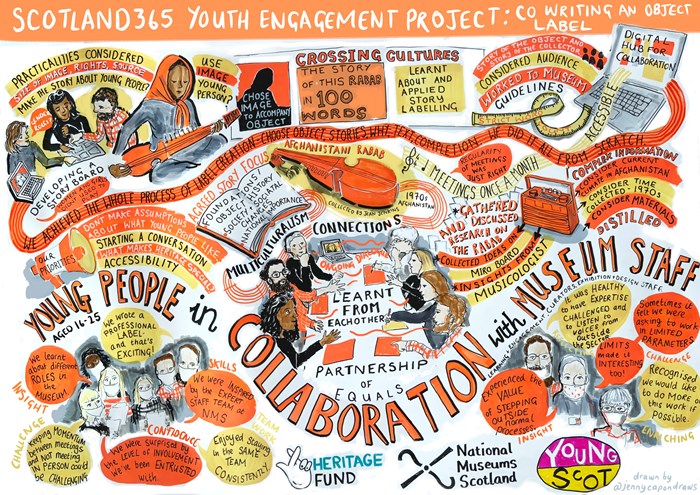
Illustration of the Organisation and Sector Development team co-design process.
How Might We...
empower young people in influencing/shaping policy and create opportunities for youth voices to be embedded in organisational culture?
Thanks to our young people
Amna, Brontë, Charlotte, Chiara, and Jacob.
During the early Explore stage, the group started to discuss the possibilities of understanding internal and external structures and where opportunities might arise. The group acknowledged the need to speak to a range of internal and external stakeholders and use evidence and data to understand current policies around youth engagement in the sector.
“How might we… empower young people in influencing/shaping policy and create opportunities for youth voice to be embedded in organisational culture?
The project group started to scope the current processes in place to identify what change was needed. Initial discussions captured a range of opportunities to engage with internal and external staff, and the question of where to focus efforts.
To support with the organisational development element, an opportunity arose to collaborate with staff on a re-fresh of the Discoveries Gallery space. The group felt this aligned to the project aim, and a way to test out collaborative working through a tangible process.
The aim for young people’s involvement was to take part in the interpretation process, embedding young people’s perspectives into object interpretation.
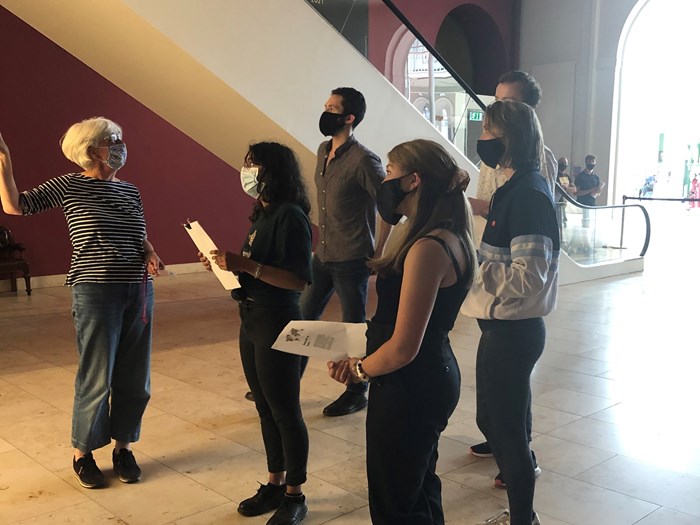
Organisational and Sector Development team in the Discoveries Gallery.
After further discussion as a project group, and with some input from the wider team working on the Discoveries Gallery, the group decided to take forward Object 3, Jean Jenkins Musical Instruments. They decided on the Rabab due to its origins as a Pashtun folk instrument to its present-day status as the national instrument of Afghanistan, and the development of women and girls’ opportunities to play it.
Along with the story of Jean Jenkins herself, the group felt connected to the range of themes and strands the object represented, with a modern-day cultural significance, and that this significance would cross over to interest wider groups of young people.
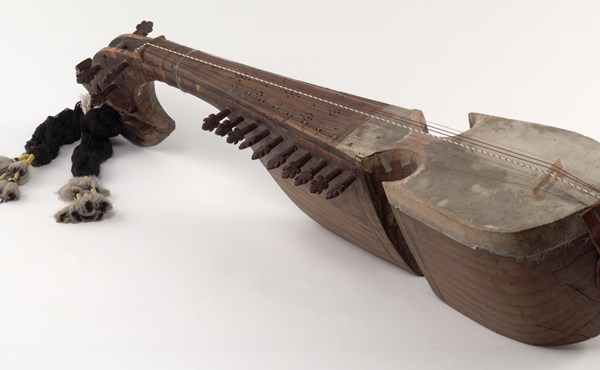
During a face-to-face, interactive, full-day session, a draft object label was developed. Relying on creative tools such as storyboards to support development, and curatorial and exhibition staff’s expertise in the area, helped guide the group to develop a final draft text for interpretation.
Considerations about the object label ranged from word count to structure and accuracy of information included. In terms of themes, the young people focused on a few different threads:
Instrument origins – It’s introduction to Afghani courts in the 19th Century and the Pashtun people, modern Pashtuns are found in Pakistan and Afghanistan
Cultural norms – The significance of women playing the Rabab – the acknowledgment of gender specific roles including musical instruments vs western ideas?
Contemporary musical influences – Rabab adapted and exported to become sarod in India
Jean Jenkins – A nod to the collector’s extensive travel
The group chose to represent the object visually with a modern-day image of a young woman playing the Rabab at the Afghani National Institute of Music, representing a shift in cultural norms.
Based on the above themes and considerations, young people drafted an object label which was then edited and finalised by the Curatorial and Exhibitions staff.
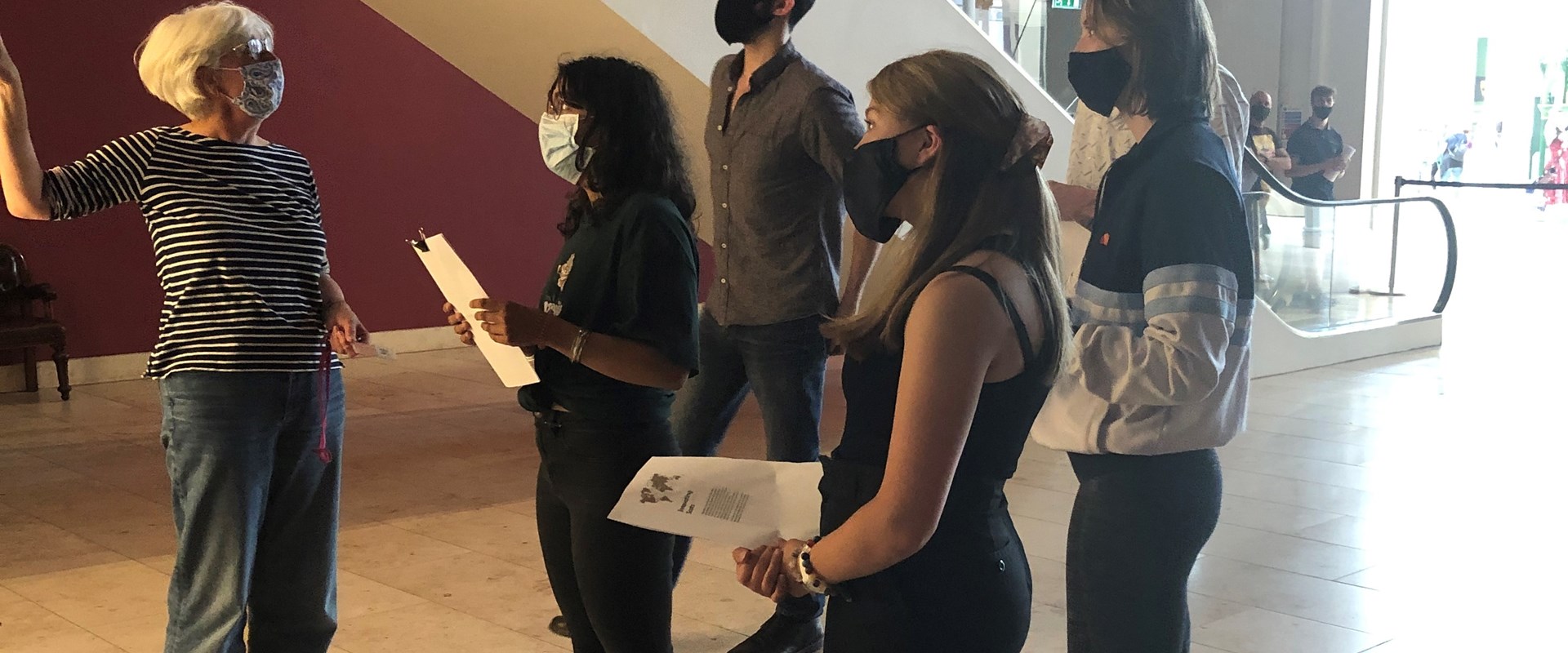
Throughout the process, the young people developed their knowledge and skills, honing insights and establishing an understanding of the wider context their project sits within. Through engagements with internal staff, external organisations and wider groups of young people insights have been strengthened to represent a range of views and needs.
With this, the Organisational and Sector Development project group highlight some key reflections and priorities related to their project aim to consider moving forward.

